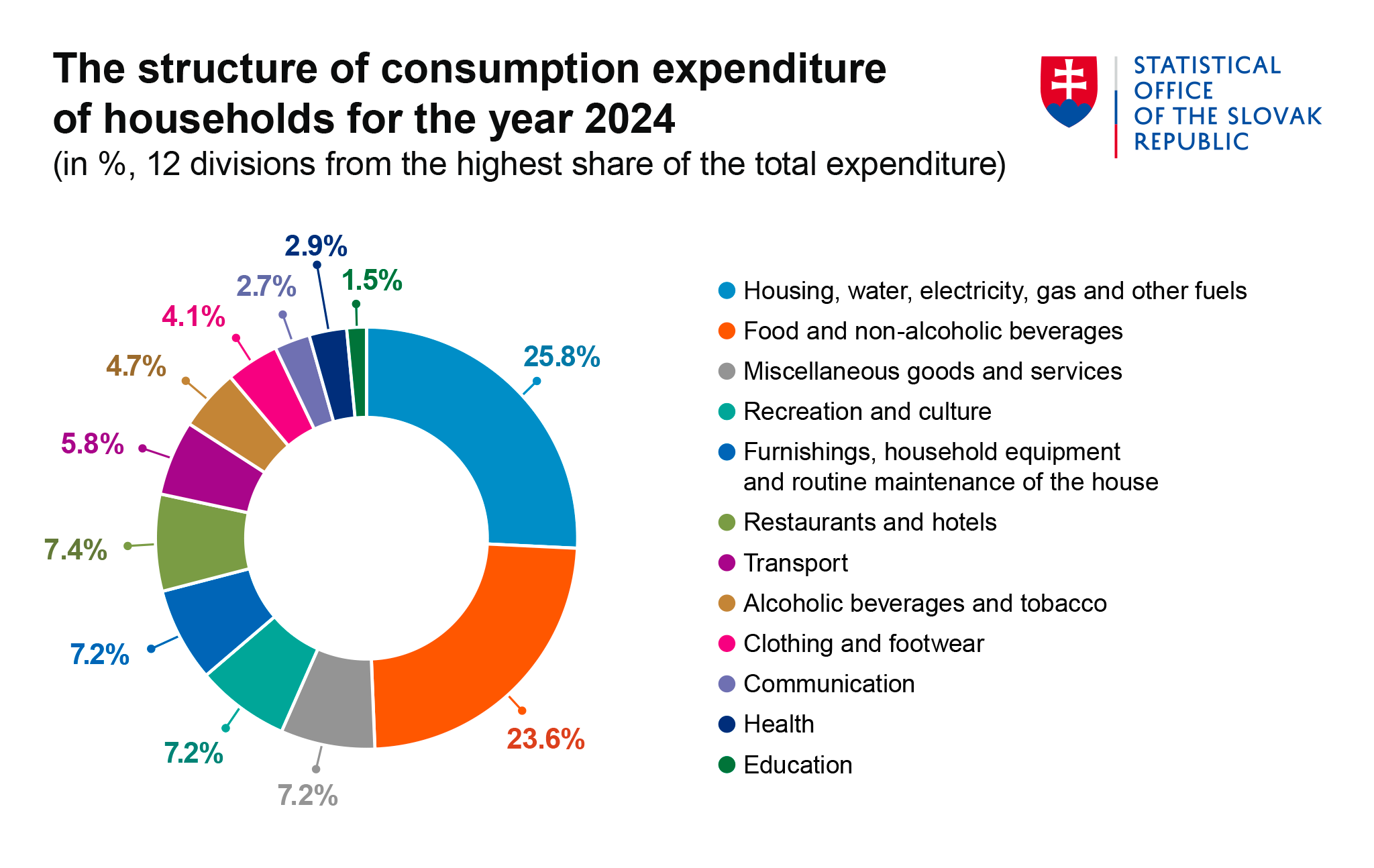In January, inflation dropped again, its value of 3.9% was the lowest since summer 2021
There was a continuing trend of slowdown in price growth and January´s inflation dropped below 4% year-on-year after more than a year. The dynamic dampening of price increases was significantly reflected in housing, energy and food. Compared to December, prices increased, and were mainly affected by seasonally higher prices of fruits and vegetables, education fees and fuel prices.
Consumer prices of goods and services rose by 0.7% in January compared to December. Year-on-year inflation reached 3.9%, the pace of price growth has been slowing since March 2023. Even in December, inflation reached 5.9%.
Download high resolution chart format PDF (89 kB) or PNG (128 kB).
Month-on-month development – January 2024 compared to December 2023
The biggest influence on January's inflation growth was the increase in the price of food and non-alcoholic beverages, the prices of which increased by 1.3% compared to the previous month. The price of fruits, vegetables and sugar with confectionery increased the most. The prices of mineral waters and juices also rose more significantly. On the contrary, the prices of meat, which are the most important among food items in terms of the household expenses, dropped by 1% on average.
From January 2024, the Statistical Office of the SR processes price outputs for food and non-alcoholic beverages from a new source – transaction data of retail chains, which replaced traditional field surveys and significantly expanded and thus enhanced the quality of output on consumer prices in the mentioned divisions.
The second most important impact was the price increase in the field of transportation, due to the month-on-month increase in fuel prices and the continued increase in prices in road and bus transport. The third most fundamental impact was the increase in fees of education by 1.9%, but mainly the adjustment of prices for kindergartens and language courses (education not definable by level).
On the contrary, New Year's sales in the clothing and footwear division had a more significant dampening effect on month-on-month price growth. The prices of these goods decreased by 1.3%. Compared to December, the usual January increase in prices of housing and energy was not manifested, on the contrary, prices dropped, especially for heating (by 2.6%).
Year-on-year development – January 2024 compared to January 2023
The pace of price growth in the year-on-year comparison has been slowing continuously for 11 months, currently reaching a value of 3.9%. Year-on-year prices were higher in all divisions (household expenditure groups), there was still a double-digit growth in education and healthcare.
Prices of food and non-alcoholic beverages, as well as housing and energy prices, still had the greatest impact on overall inflation in the year-on-year comparison. These are the two most significant components of household expenses. However, both components continued to follow the overall trend of slowing price growth. The pace of higher food prices decreased dynamically during the past year, from a level of almost 29% at the beginning of last year, it slowed down to the current value of 4.9%. Currently, 7 out of 9 food components recorded higher prices year-on-year, but in all of them the price increase slowed down. However, the prices of vegetables and sugar with confectionery were still growing at a double-digit rate. The consumers paid less than a year ago only for milk, cheese and eggs by 3.2% and for oils and fats by 4.5%.
Prices in housing and energy decreased, in January their growth reached an average level of 0.5%, which is the lowest value since May 2021. The slowdown in overall growth was mainly influenced by year-on-year lower prices of the weighty components of housing – energy by 1.2% and imputed rent by 0.5%. However, the prices of water and sewerage, waste removal, as well as prices for maintenance and repairs of dwellings have increased.
The year-on-year decline in fuel prices gradually moderated towards the end of the year, and in January consumers paid for them by only 0.4%, less than a year ago.
Development of core and net inflation
In January, the total annual inflation rate was 3.9%, core inflation reached 4.5% and net inflation reached 4.3%. On a month-on-month basis, core inflation reached a value of 0.5% and net inflation a value of 0.2%.
Core inflation was affected by price level growth after excluding the impact of changes in regulated prices (e.g. energy prices) and other administrative measures (e.g. tax adjustments, etc.). Net inflation is core inflation without changes in food prices.











 Help
Help